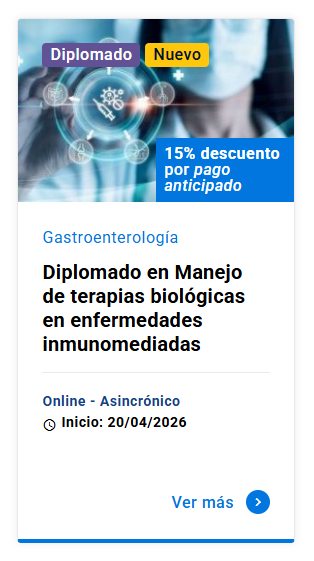Braquiterapia para el cáncer de próstata. Una revisión actualizada de su historia, sus indicaciones, la evidencia que la sustenta y sus controversias.
DOI:
https://doi.org/10.11565/arsmed.v44i3.1560Palabras clave:
braquiterapia., cáncer de próstataResumen
Introducción: en Chile el cáncer de próstata es el cáncer más frecuente en hombres. Se estima que aproximadamente 5700 hombres son diagnosticados cada año. Esta enfermedad aun en sus estadios iniciales tiene un comportamiento y tratamiento específico dependiendo de características clínicas y patológicas. Las alternativas terapéuticas incluyen desde el seguimiento activo hasta la cirugía. La radioterapia en forma de braquiterapia tiene un rol fundamental desde el cáncer de próstata de bajo hasta el alto riesgo.
Objetivos: el objetivo de esta revisión pretende resumir las publicaciones más recientes sobre la evolución histórica de esta modalidad de tratamiento, sus indicaciones de tratamiento así como la evidencia que la sustenta. Metodología: se realizó una revisión exhaustiva libre de la literatura publicada en Pubmed utilizando los términos MESH. Resultados: la Braquiterapia en su forma de baja y alta tasa tiene amplia evidencia que la sustenta tanto como escalamiento de dosis asociado cuando se asocia a radioterapia externa como tratamiento exclusivo. Estudios randomizados muestran resultados superiores en términos de control bioquímico sin diferencias en sobrevida global. Conclusiones: la braquiterapia de cáncer de próstata ha presentado grandes avances tecnológicos que la posicionan como una alternativa terapéutica para la gran mayoría de los pacientes con cáncer de próstata localizado y debiera discutirse con ellos previo al inicio del tratamiento.
Descargas
Citas
Aronowitz JN. (2002). Dawn of Prostate Brachytherapy : 1915 – 1930. Radiation Oncology 54, 712–718. DOI: https://doi.org/10.1016/S0360-3016(02)02987-5
Aronowitz JN. (2014). Introduction of transperineal image-guided prostate brachytherapy. International Journal of Radiation Oncology Biology Physics 89, 907–915. DOI: https://doi.org/10.1016/j.ijrobp.2014.04.010
Barringer BS (1917). Radium in the treatment of carcinoma of the bladder and prostate. JAMA 68, 1227–1230. DOI: https://doi.org/10.1001/jama.1917.04270040215002
Berg S, Cole AP, Krimphove MJ, Nabi J, Marcheses M, Lipsitz S R, Noldus J, Choueiri T K, Kibel AS & Trinh Q. (2019) Comparative Effectiveness of Radical Prostatectomy Versus External Beam Radiation Therapy Plus Brachytherapy in Patients with High-risk Localized Prostate Cancer. European Urology 75, 552-555 DOI: https://doi.org/10.1016/j.eururo.2018.10.032
Brucer M. (1958). Brachytherapy. Am J Roentgenol Radium Ther Nucl Med 79, 180–1090.
Davis BJ, Horwitz EM, Lee WR, Crook JM, Stock RG, Merrick GS, Butler WM, Grimm PD, Stone NN, Potters L, Zietman AL, Zelefsky MJ & American Brachytherapy Society (2012). American Brachytherapy Society consensus guidelines for transrectal ultrasound-guided permanent prostate brachytherapy. Brachytherapy 11, 6–19. DOI: https://doi.org/10.1016/j.brachy.2011.07.005
Dayes IS, Parpia S, Gilbert J, Julian JA, Davis IR, Levine MN & Sathya J. (2017). Long-Term Results of a Randomized Trial Comparing Iridium Implant Plus External Beam Radiation Therapy With External Beam Radiation Therapy Alone in Node-Negative Locally Advanced Cancer of the Prostate. International Journal of Radiation Oncology Biology Physics 99, 90–93. DOI: https://doi.org/10.1016/j.ijrobp.2017.05.013
Ferlay J, Soerjomataram I, Dikshit R, Eser S, Mathers C, Rebelo M, Parkin DM, Forman D & Bray F (2013). Cancer Incidence and Mortality Worldwide: IARC CancerBase No. 11.
Fuller DB, Naitoh J, Lee C, Hardy S, & Jin H. (2008). Virtual HDRSM CyberKnife Treatment for Localized Prostatic Carcinoma: Dosimetry Comparison With HDR Brachytherapy and Preliminary Clinical Observations. International Journal of Radiation Oncology Biology Physics 70, 1588–1597. DOI: https://doi.org/10.1016/j.ijrobp.2007.11.067
Grimm P, Billiet I, Bostwick D, Dicker AP, Frank S, Immerzeel J, Keyes M, Kupelian P, Lee WR, Machtens S, Mayadev J, Moran BJ, Merrick G, Millar J, Roach M, Stock R, Shinohara K, Scholz M, Weber E, Zietman A, Zelefsky M, Wong J, Wentworth S, Vera R & Langley S (2012). Comparative analysis of prostate-specific antigen free survival outcomes for patients with low, intermediate and high risk prostate cancer treatment by radical therapy. Results from the Prostate Cancer Results Study Group. BJU Int 109 Suppl, 22–29. DOI: https://doi.org/10.1111/j.1464-410X.2011.10827.x
Hilaris BS (1997). Brachytherapy in cancer of the prostate: An historical perspective. Seminars in Surgical Oncology 13, 399–405. DOI: https://doi.org/10.1002/(SICI)1098-2388(199711/12)13:6<399::AID-SSU3>3.3.CO;2-L
Holm HH. (1997). The history of interstitial brachytherapy of prostatic cancer. Semin Surg Oncol 13, 431–437. DOI: https://doi.org/10.1002/(SICI)1098-2388(199711/12)13:6<431::AID-SSU7>3.0.CO;2-B
Hoskin PJ, Motohashi K, BownesP, Bryant L & Ostler P. (2007). High dose rate brachytherapy in combination with external beam radiotherapy in the radical treatment of prostate cancer : initial results of a randomised phase three trial 84, 114–120. DOI: https://doi.org/10.1016/j.radonc.2007.04.011
Jolicoeur M. (2015). HDR Brachytherapy as Monotherapy for Low and Intermediate Risk Prostate Cancer (BRP2). Accedido en https://clinicaltrials.gov/ct2/results?recrs=ab&cond=Prostate+Cancer&term=brachytherapy&cntry=&state=&city=&dist= el 03-02-2018
Kishan AU, Cook RR, Ciezki JP, Ross AE, Pomerantz MM, Nguyen P L et al., … (2018). Radical Prostatectomy, External Beam Radiotherapy, or External Beam Radiotherapy With Brachytherapy Boost and Disease Progression and Mortality in Patients With Gleason Score 9-10 Prostate Cancer. Jama 319, 896-905. DOI: https://doi.org/10.1001/jama.2018.0587
Ministerio de Salud de Chile (2015) DEIS, Departamento de estadísticas e informacion en salud. Defunciones por tumor maligno de la próstata (CIE-10: C61.X), según Region de residencia. Accedido en http://www.deis.cl/series-y-graficos-de-mortalidad/ el 24-09-2018
Morris WJ, Keyes M, Palma D, Spadinger I, McKenzie MR, Agranovich A, Picklesa T, Liub M, Kwan W, Wua J, Bertheletc E & Pai H. (2009). Population-based Study of Biochemical and Survival Outcomes After Permanent 125I Brachytherapy for Low- and Intermediate-risk Prostate Cancer. Urology 73, 860–865. DOI: https://doi.org/10.1016/j.urology.2008.07.064
Morris WJ, Tyldesley S, Rodda S, Halperin R, Pai H, McKenzie M, Duncan G, Morton G, Hamm J & Murray N. (2017). Androgen Suppression Combined with Elective Nodal and Dose Escalated Radiation Therapy (the ASCENDE-RT Trial): An Analysis of Survival Endpoints for a Randomized Trial Comparing a Low-Dose-Rate Brachytherapy Boost to a Dose-Escalated External Beam Boost f. International Journal of Radiation Oncology Biology Physics 98, 275–285. DOI: https://doi.org/10.1016/j.ijrobp.2016.11.026
Morton G, Chung HT, Mcguffin M, Helou J, Alimonte LD, Ravi A, Cheung P, Szumacher E, Liu S, Al-Hanaqta M, Zhang L, Mamedov A & Loblaw A. (2017). Prostate high dose-rate brachytherapy as monotherapy for low and intermediate risk prostate cancer : Early toxicity and quality-of life results from a randomized phase II clinical trial of one fraction of 19 Gy or two fractions of 13. 5 Gy. Radiotherapy and Oncology 122, 87–92. DOI: https://doi.org/10.1016/j.radonc.2016.10.019
NCCN. (2018). NCCN clinical practice guidelines in Oncology Prostate Cancer. Accedido en https://www.nccn.org/professionals/physician_gls/pdf/prostate.pdf el 22-02-2018
PardoY, Guedea F, Ferrán Aguiló F, Fernández P, Macías V , Mariño A, Hervás A, Herruzo I, Ortiz MJ, Ponce de León J et al., (2010). Quality-of-Life Impact of Primary Treatments for Localized Prostate Cancer in Patients Without Hormonal Treatment. Journal of c linical oncology 28, 4687-4696. DOI: https://doi.org/10.1200/JCO.2009.25.3245
Pasteau ODP. (1914). The radium treatment of cancer of the prostate. Arch Roentgen Ray, 18, 396–410. DOI: https://doi.org/10.1259/arr.1914.0140
Potters L, Morgenstern C, Calugaru E, Fearn P, Jassal A, Presser J & Mullen E. (2005). 12-year outcomes following permanent prostate brachytherapy in patients with clinically localized prostate cancer 173, 1562–1566. DOI: https://doi.org/10.1097/01.ju.0000154633.73092.8e
Prestidge BR, Winter K, Sanda MG, Amin M, Bice Jr WS, Michalski J, Ibbott GS,
Crook JM, Catton CN, Gay HA, Donavanik V, Beyer DC, Frank SJ, Papagikos MA,
Rosenthal SA, Barthold II HJJ, M. Roach III, & Sandler HM. (2016). Initial Report of NRG Oncology / RTOG 0232 : A Phase III Study Comparing Combined External Beam Radiation and Transperineal Interstitial Permanent Brachytherapy with Brachytherapy Alone for Selected Patients with Intermediate Risk Prostatic Carcinoma B ac. International Journal of Radiation Oncology • Biology • Physics 96, 2 DOI: https://doi.org/10.1016/j.ijrobp.2016.06.026
Ragde H, Grado G, Nadir B & Elgamal A. (2000). Modern prostate brachytherapy. Ca Cancer J Clin 50, 380–393. DOI: https://doi.org/10.3322/canjclin.50.6.380
Sathya JR, Davis IR, Julian JA, Guo Q, Daya D, Dayes IS & Levine M. (2005). Randomized trial comparing iridium implant plus external-beam radiation therapy with external-beam radiation therapy alone in node-negative locally advanced cancer of the prostate. Journal of Clinical Oncology 23, 1192–1199. DOI: https://doi.org/10.1200/JCO.2005.06.154
Sharkey J, Cantor A, Solc Z, Huff W, Chovnick S, Behar R, Perez R, Otheguy J & Rabinowitz R. (2005). 103Pd brachytherapy versus radical prostatectomy in patients with clinically localized prostate cancer: A 12-year experience from a single group practice. Brachytherapy 4, 34–44. DOI: https://doi.org/10.1016/j.brachy.2004.12.001
Smith GD, Mrt T, Pickles T, Crook J, Martin A, Vigneault E, Cury F, Morris J, Catton C, Lukka H, Warner A, Yang Y & Rodrigues G. (2014). Brachytherapy Improves Biochemical Failure e Free Survival in Low- and Intermediate-Risk Prostate Cancer Compared With Conventionally Fractionated External Beam Radiation Therapy : A Propensity Score Matched Analysis. Radiation Oncology Biology 91, 505–516. DOI: https://doi.org/10.1016/j.ijrobp.2014.11.018
Spratt DE, Scala LM, Folkert M, Voros L, Cohen GN, Happersett L, Katsoulakis E, Zelefsky M, Kollmeier M & Yamada Y. (2013). A comparative dosimetric analysis of virtual stereotactic body radiotherapy to high-dose-rate monotherapy for intermediate-risk prostate cancer. Brachytherapy 12, 428–433. DOI: https://doi.org/10.1016/j.brachy.2013.03.003
Strouthos I, Tselis N, Chatzikonstantinou G, Butt S, Baltas D, Bon D, Milickovicc N & Zamboglou N. (2017). High dose rate brachytherapy as monotherapy for localised prostate cancer. Radiotherapy and Oncology 126, 270 -277. DOI: https://doi.org/10.1016/j.radonc.2017.09.038
Yamada Y, Rogers L, Demanes DJ, Morton G, Prestidge BR, Pouliot J, Cohen GN, Zaider M, Ghilezan M, Hsu IC & American Brachytherapy Society. (2012). American Brachytherapy Society consensus guidelines for high-dose-rate prostate brachytherapy. Brachytherapy 11, 20–32. DOI: https://doi.org/10.1016/j.brachy.2011.09.008
Descargas
Publicado
Cómo citar
Licencia
Derechos de autor 2019 ARS MEDICA Revista de Ciencias Médicas

Esta obra está bajo una licencia internacional Creative Commons Atribución-CompartirIgual 4.0.
Los autores/as conservan sus derechos de autor y garantizan a la revista el derecho de primera publicación de su obra, la que estará simultáneamente sujeta a la Licencia CC BY-SA 4.0 (Ver declaración de Acceso Abierto).







